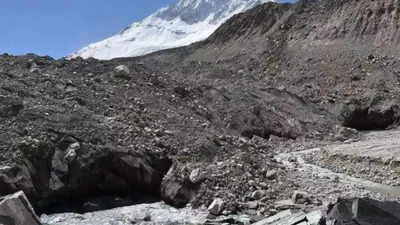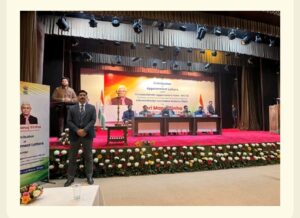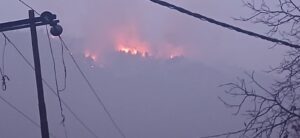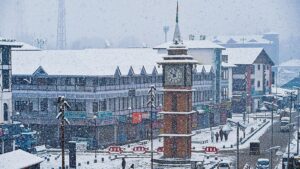Uttarakhand’s glacier area shrank over 21sq km in 23 years: Study

DEHRADUN: Uttarakhand’s glacier area has declined from 979 sq km in 2000 to 957.6 sq km in 2023, says a recent study which identified key topographical and morphological factors driving glacier retreat in the state’s Himalayan range.
Published in ‘Earth Surface Processes and Landforms’, a peer-reviewed journal, the study analysed 116 glaciers in the state over 23 years and found that “the region’s total glacier area has been shrinking at an average annual deglaciation rate of 0.095%.”
Titled ‘Glacier area variation in Uttarakhand Himalaya: Investigating trends and influencing factors’, the study found that “Gangotri Glacier recorded the highest area loss, shrinking by 2.38 sq km, followed by Panpatia Glacier, which lost 2.18 sq km.” Meanwhile, the fastest rate of retreat was observed in G27, a smaller glacier that shrank “from 0.595 sq km in 2000 to 0.401 sq km in 2023, with an annual reduction rate of 1.41%.”
The study, authored by Iti Shrivas, Supratim Guha, Reet Kamal Tiwari, Mohit Prajapati, and Ashutosh Laxman Taral, mapped 979 sq km of glacier area, covering about 39% of Uttarakhand’s glaciated region. The glaciers analysed range in size from 0.36 sq km to 118.3 sq km. The research attributed climate change as the primary driver of glacier retreat and that its impact on the Himalayas was more severe than the global average. Rising temperatures, air pollution—particularly from black carbon buildup—and shifting precipitation patterns were identified as key contributors to glacial melt.
The study found that glacier retreat is not uniform and varies based on factors such as topography, slope, debris cover, and shape index. One of the most influential parameters identified is the shape index, which measures how elongated or compact a glacier is. The findings indicate that elongated glaciers which have a higher shape index are more stable than compact, circular ones, with every 10% increase in shape index reducing glacier loss by 0.112% per year.
Slope also plays a crucial role, with steeper glaciers experiencing less area loss than those with gentler slopes, said the researchers. It was found that for every 10% increase in slope, glaciers lost 0.11% less area per year, as steeper terrain allows for faster ice movement, reducing prolonged exposure to higher temperatures.
The study also analysed glacier surface ice velocity (SIV), which measures how fast a glacier moves. While glaciers with higher velocities exhibited lower area loss up to a threshold of 15 to 20 meters per year, beyond this point, the trend reverses and ice loss increases with velocity.
Elevation was another key factor in glacial dynamics. Unlike previous findings that suggested glaciers at lower elevations shrink faster, this study found greater area loss at higher altitudes in the Uttarakhand Himalayas, possibly due to accelerated warming at these elevations, a trend which is increasingly reported in global climate studies.
“The findings from Uttarakhand align with broader trends observed across the Himalayan region. Similar studies have reported varying rates of glacier loss, with some regions exhibiting a faster retreat than others due to differences in topography, climate, and other environmental factors,” the researchers said. For instance, research in the Garhwal Himalaya found a 1.3% glacier area reduction between 2001 and 2021, while a study in the Upper Alaknanda basin reported a 6.6% decline in glaciated area between 1973 and 2020.





